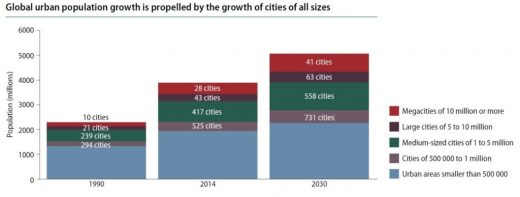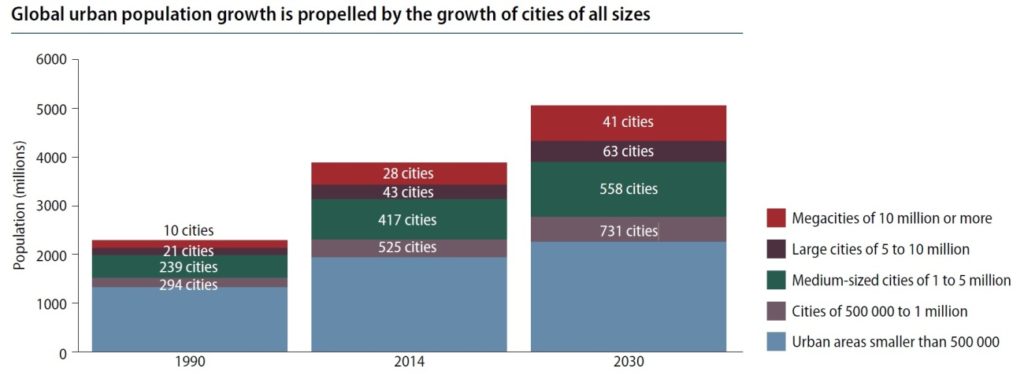3 counterintuitive trends to consider when thinking about smart cities
3 counterintuitive trends to consider when thinking about smart cities

The idea of creating better cities is as old as human settlement. Smart cities is our latest iteration, amidst the Fourth Industrial Revolution, now that we have exponentially more data and computing power available affordably. This article will focus on illuminating three counterintuitive trends I have observed with smart cities.
Trend 1: Cheap sensors are not enough
There is a widely ingrained belief that having cheap sensors means we will be able to deploy great products and services to manage water, energy or traffic in our cities. Indeed, the cost of sensors has more than halved in a decade but what hasn’t changed yet is the actual placement of these sensors into the end devices. So if you are trying to do vehicle to infrastructure (V2I) communication, outside of a few highly specialized environments, you simply don’t have enough sensors on the road to be able to do anything meaningful.
Even if you are a well-capitalized company you may face the chasm of adoption, like the cautionary tale of iBeacons. Anyone wishing to innovate within smart cities needs to contend that creating highly specialized environments may actually be a precondition, and potentially pushing them through policy a postcondition.

Amit Garg, Principal, Samsung NEXT Ventures
Trend 2: Be iterative & leapfrog
Leapfrog approaches are the stuff that innovators, especially in Silicon Valley, talk about. Take a radically different approach and disrupt this industry, so goes the mantra. When it comes to smart cities I think nothing could be further from truth. Our technology progresses often much faster than our ability to adapt to them and when it comes to adjusting to new ways of living, potentially even relocating, it just adds a significant barrier.
Case in point, the successful smart city projects are being incubated in vibrant places with a long-standing culture of innovation, whether it be Singapore or Songdo right outside of Seoul. Starting from scratch on the other hands has had setbacks, whether championed by a strong government in Masdar City or a powerful corporation in Celebration, USA. I believe iterative approaches are the way to go ie incremental improvements in a city’s infrastructure rather than drastic overhauls.
Trend 3: You do not need scale
We live in an increasingly urban world — 2007 is widely seen as the year when for the first time in history there were more humans living in cities than in rural areas. But the trend is hyper-urbanization, with people concentrating even more in a few cities, and most of those mega cities increasingly in Asia and Africa.

This means that if you are developing an innovation around smart cities you may not need to get to scale in hundreds of cities, just a few markets might actually do it. In fact, if you can get an innovation working fully even in one mega city you may create a hugely successful company with the due caveat that a single point of failure, especially in an area rife with policy, is a high risk.
The author is currently a Principal at Samsung NEXT Ventures, which houses their early-stage investment arm, headquartered in the heart of Silicon Valley. He focuses on software, especially Internet & consumer technologies, investing $ 250K to $ 3M in seed, series A or B, and helping them partner with Samsung to grow and make a meaningful difference in people’s lives.
The post 3 counterintuitive trends to consider when thinking about smart cities appeared first on ReadWrite.
(24)














